#substitution method examples
Explore tagged Tumblr posts
Text
something that comes up for me over and over is a deep frustration with academics who write about and study craft but have little hands-on experience with working with that craft, because it leads to them making mistakes in their analysis and even labelling of objects and techniques incorrectly. i see this from something as simple as textiles on display in museums being labelled with techniques that are very obviously wrong (claiming something is knit when it's clearly crochet, woven when that technique could only be done as embroidery applied to cloth off-loom) to articles and books written about the history of various aspects of textiles making considerable errors when trying to describe basic aspects of textile craft-knowledge (ex. a book i read recently that tried to say that dyeing cotton is far easier than dyeing wool because cotton takes colour more easily than wool, and used that as part of an argument as to why cotton became so prominent in the industrial revolution, which is so blatantly incorrect to any dyer that it seriously harms the argument being made even if the overall point is ultimately correct)
the thing is that craft is a language, an embodied knowledge that crosses the boundaries of spoken communication into a physical understanding. craft has theory, but it is not theoretical: there is a necessary physicality to our work, to our knowledge, that cannot be substituted. two artisans who share a craft share a language, even if that language is not verbal. when you understand how a material functions and behaves without deliberate thought, when the material knowledge becomes instinct, when your hands know these things just as well if not better than your conscious mind does, new avenues of communication are opened. an embodied knowledge of a craft is its own language that is able to be communicated across time, and one easily misunderstood by those without that fluency. an academic whose knowledge is entirely theoretical may look at a piece of metalwork from the 3rd century and struggle to understand the function or intent of it, but if you were to show the same piece to a living blacksmith they would likely be able to tell you with startling accuracy what their ancient colleague was trying to do.
a more elaborate example: when i was in residence at a dye studio on bali, the dyer who mentored me showed me a bowl of shimmering grey mud, and explained in bahasa that they harvest the mud several feet under the roots of certain species of mangroves. once the mud is cleaned and strained, it's mixed with bran water and left to ferment for weeks to months. he noted that the mud cannot be used until the fermentation process has left a glittering sheen to its surface. when layered over a fermented dye containing the flowers from a tree, the cloth turns grey, and repeated dippings in the flower-liquid and mud vats deepen this colour until it's a warm black.
he didn't explain why this works, and he did not have to. his methods are different from mine, but the same chemical processes are occurring. tannins always turn grey when they interact with iron and they don't react to other additives the same way, so tannins (polyphenols) and iron must be fundamental parts of this process. many types of earthen clay contain a type of bacteria that creates biogenic iron as a byproduct, and mixing bran water with this mud would give the bacteria sugars to feast upon, multiplying, and producing more of this biogenic iron. when the iron content is high enough that the mud shimmers, applying this fermented mixture to cloth soaked in tannins would cause the iron to react with the tannin and finally, miraculously: a deep, living grey-black cloth.
in my dye studio i have dissolved iron sulphide ii in boiling water and submerged cloth soaked in tannin extract in this iron water, and watched it emerge, chemically altered, now deep and living grey-black just like the cloth my mentor on bali dyed. when i watched him dip cloth in this brown bath of fermented flower-water, and then into the shimmering mud and witness the cloth emerge this same shade of grey, i understand exactly what he was doing and why. embodied craft knowledge is its own language, and if you're going to dedicate your life to writing about a craft it would be of great benefit to actually "speak" that language, or you're likely to make serious errors.
the arrogance is not that different from a historian or anthropologist who tries to study a culture or people without understanding their written or spoken tongue, and then makes mistakes in their analysis because they are fundamentally disconnected from the way the people they are talking about communicate. the voyeuristic academic desire to observe and analyse the world at a distance, without participating in it. how often academics will write about social movements, political theory and philosophy and never actually get involved in any of these movements while they're happening. my issue with the way they interact with craft is less serious than the others i mentioned, but one that constantly bothers me when coming into contact with the divide between "those who make a living writing about a subject" and "those who make a living doing that subject"
#you dont have to read all this im just ranting to myself#like this goes on for a while im just warning you
1K notes
·
View notes
Text

Libations
As a Hellenic polytheist, one of our most important duties to our gods would be to give libations. Libations are liquid offerings to our gods, not only in recognition of them and their importance but as an invitation into our lives for them.
When it comes to giving libations, it can be difficult for those of us practicing and worshipping in secret. So in this post I'll go over typical libations and how they're given, and then some methods I believe would be helpful for those that can't give openly! Please keep in mind that the suggested methods (for those practicing in secret) come from someone who is still navigating and learning her own religion. As always, do your own research where needed and do methods that make you most comfortable in your practices.

Typical Libations
Wine (typically red)
Symbolic of the divine ether, and Zeus's influence on the soul. Additionally, dark red wine represents the blood of Dionysus/Zagreus. We drink his blood as reflectance for his sacrifice by the titans and the eating of his flesh. It represents his metamorphosis, and in turn, our own cycle of birth.
Milk
Representative of Hera and Ira, whose breast milk formed the galaxies and cosmos. Milk also represents the earth.
Honey
Honey is golden which is incredibly symbolic of the gods, particularly their ichor (the blood of the gods). Honey is also a powerful preservative representing the immortality of the gods.
Fine oil (typically olive)
Oil historically symbolizes life, prosperity, and the divine spirit.
Milk and honey together are also a considerable libations but is particularly good for death related gods and the honoring of the dead. Milk and honey libations for them should NOT be consumed.
Giving Libations
To give libations, you would first pick up the offering bowl full of whatever you are giving with your right hand, then hold it with both and recite a dedication. The dedication itself is up to you but the example I saw is as follows:
"We dedicate this libation to khrismôdós Apóllôn and aithǽrios Diónysos and to all the happy, deathless Gods!"
Libations can be made to a singular god or multiple at once. Just ensure you have enough for them equally. Dedications can also be to a singular god or you can name the ones you are dedicating to.
Once you've made your dedication, you'll transfer the bowl to your left hand and pour your offering on the ground or into whatever reservoir you have dedicated to it on your altar. This is your libation, and the offering now belongs to them. Once you've made your libations, you may sip from the remaining contents of the bowl as communion. Before doing so, you may recite a prayer. Here is an example:
"We drink the blood of Diónysos! May the Aithír of Zefs intoxicate our souls and transform us!"
Please be aware that you should NOT drink libations to the dead or to death gods.
When sipping from the remainder of your libations, do NOT sip from the part where you poured. You should drink from the opposite end of the bowl.

Libations in Secret
When you're practicing in secret, this method of libations can be incredibly difficult. So with that, here are a few ways that I think could be helpful!
Can't access or drink wine/milk/honey? Substitute them for water or better yet, flavored juices!
Pomegranate juice can make a good libation for Underworld gods and goddesses, apple juice would be good for Zeus, etc. Research your deity's associations and try working with them. Water is also life-giving and integral to life.
Can't pour your libations outside or in a dedicated offering bowl? Use cups!
Pour your libations directly from the bottle to a cup and sit it on a shelf or desk or wherever you've dedicated to your god. You can recite your prayers and dedications in your head as well.
Worried about wasting drinks? Offer a smaller amount!
Typically what you give should be more than you keep, but your gods understand your struggles and would be understanding of your intentions. Offer a small amount of your drink, honey, etc and inform them of your reasonings and intentions. Your gods love you, they'll be happy with your efforts regardless.
Can't do your libations during the day? Do them at night!
Give your libations while everyone is asleep. You can even hide it under your bed or behind something to keep it for the time you want. (Please be careful of doing this with honey and be mindful of possible insects, pets, pests, spills, etc)
A minor? Do your libations at school!
You can do your libations while at school by making them during a PE class, during lunch, or any period of time where you can take a moment to do so! (I'm not condoning using your bathroom breaks to sneak off and do them, I'm just saying you definitely could do that)

Regardless of how you do your libations and with what, your practice is your own as is your relationship with your god(s). Do what feels right for you ♡
#hellenic worship#hellenic polytheism#hellenism#helpol#hellenic deities#libations#hellenic community#hellenic#hellenismos#deity offerings#libations to the gods#library: learning
622 notes
·
View notes
Text
AIN’T NOTHING TOO BIG, BABY
don’t listen to those cheap haters


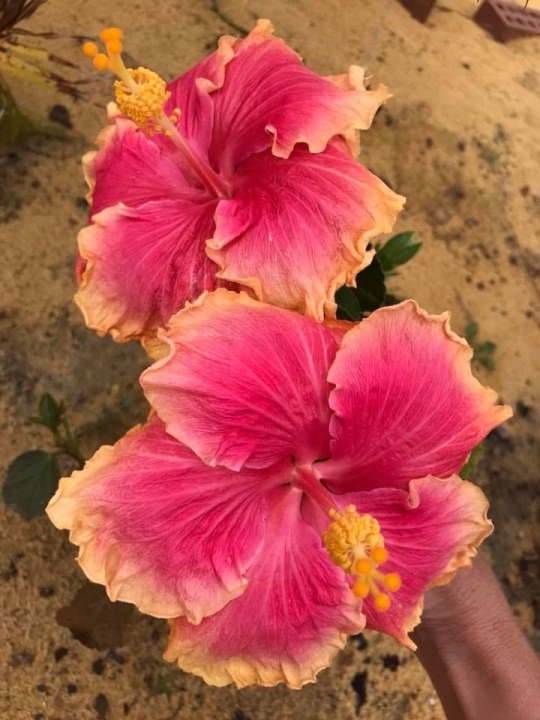
I received an ask recently that opened my eyes to the fact that a lot of you need this reminder. This really applies to everyone in the community, whether your plans are to permashift, respawn or manifest something in your current reality, listen: There is nothing too big for you to manifest. ever. I’m gonna repeat a lot of what i said in my answer but here goes anyways….
If you see someone who acts so high and mighty preaching about the law, just for them to turn around and have the audacity to tell someone that something is "too big" to manifest, then they're dumb and not someone you should be looking to for advice or opinions. And i want you to know if you think your desires are too big or you have been turned away, you’re not crazy and you’re not “asking for too much”
Do i need to remind you who you are? you’re a god meaning whatever you say goes, there is nothing too big for a god and you know it. Stop talking yourself out of it because you are scared. The law is law and will never fail no matter what your desire is. Although, if you still have trouble understanding your full potential, i recommend using methods where your subconscious mind is in full control, for example the void or SATS, but it is just as easy to manifest “huge” things with some standard methods like affirming or visualisation too! You need to get it through your skulls everything is easy for you.
Manifesting the sun to shine a little brighter is the same as manifesting being a billionaire
Manifesting your eyes to be a lighter shade is the same as revising a whole ass country for you to live in
Manifesting a substitute for your chemistry lesson because you hate your teacher is the same as manifesting an entirely new family
You guys, there is nothing too big or too small, too many hypocrites have infested this community with their bullshit, preaching about how we can do anything yet turning around to tell someone that what they want isn't possible, that what they desire “makes no logical sense”. Now tell me, if we're gods and we can do anything, how does that even make any sense?
So my loves, if you have a desire you think is “big” or “heavy” excuse my language but grab it by the balls because guess the fuck what? you’re the boss, not those close minded people who think manifesting is fake, not the loser who “believes in manifesting” but had the audacity to tell you you’re dreaming too big, not anyone else but YOU, because you’re a GOD
EVERYTHING IS EASY FOR YOU, AND YOU KNOW IT ༄ 🪸🌺💋

#pre salem#law of assumption#permashifting#shifting#loa#shiftblr#reality shifting#success story#the void#void concept#void state#respawning#manifesting#manifestation#master manifestor
962 notes
·
View notes
Text
Bioregional Magic: Sustainable Ways to Work with Native Plants
Note: Post Contains Personal Anecdotes and UPG
As someone with a nature-based practice, I completely understand the desire to work with native plants. Many of us are deeply compelled to foster a connection with our land spirits and the local flora and fauna.
But with the normalization of consumption in witchcraft spaces paired with unethical wildcrafting and foraging practices, it's important to be careful. We don't want to harm the native plant populations and the wildlife that depends on them in our quest for a more localized practice.
Learning which plants are safe to harvest
By safe, I don't mean safe to handle or consume, though this is also crucial knowledge for anyone harvesting wild plants in general. I'm specifically referring to whether or not the collection of native plant matter will make a negative impact on the local ecosystem.
Think of it this way, if your practice is spirit-focused. Will the collective spirits of certain plants really want to assist you if you're devastating their population for your own gain? IME the answer is a hard no.
Take a look at a field guide and start identifying some of the native plants in your region. Are some of them listed as endangered, threatened, or special concern? Now you know which plants you should never disturb or collect materials from.
If not threatened, are some species generally harder to find? Are they present only in a certain type of environment? Do they take a long time to mature and/or have a very specific method of seed dispersal? Proceed with caution.
Example:
Common Blue Violets are one of the first plants to bloom in my garden during springtime. I also consider them very important in my practice and like to harvest them for certain rituals. But like I said, they're one of the first native plants to bloom during spring. Which means there are going to be pollinating insects, songbirds, and small mammals which rely on these plants for food. And predators who rely on those animals.
Since this is a hardy plant that usually grows in abundance, it's okay for me to harvest some from the garden for personal use. But I still need to leave enough to serve as a resource for wildlife and allow it to reproduce for the following year.
On the contrary, I never touch my wild Bloodroot. I only have two or three plants in the garden, their seeds have double dormancy germination requirements, and they take 2-3 years to reach blooming size. I have only ever collected seeds for propagation, and even then do it rarely because I know that the ants do a much better job at this than I could.
So when we can't harvest materials to use for tools and ingredients in workings, how do we utilize these plants in our practice?
Physical Representations and Symbolism
Images, objects, and symbols representing the plant can be used to substitute organic matter that you would otherwise collect and use for workings. Consider art pieces or photos, sculptures, sigils and seals, paper cut or folded into the shape of leaves or flowers, etc.
If the plant is your main component or energy source, consider designing the working to cater to this. For example, if I'm petitioning the spirit of milkweed, I might want to incorporate aspects of air and wind, since this is how their seeds are distributed. Or I may want to add some lunar energies knowing that this is the planetary correspondence for milkweed. This is would completely depend on my intent for the specific working and which physical or spiritual aspects of the plant I choose to work with.
If you're seeking a more long-term effect, try getting crafty and using symbols of the plant to decorate your own tools. I'm talking homemade oracle cards, painted jars or boxes for container spells, decorated offering bowls, ritual jewelry, and so on.
Working with Living Plants
This one is for the spirit workers. While it's entirely possible to petition plant spirits, especially collectives, solely using imagery, working carefully with a living plant can help establish a more direct spiritual connection.
This can be done by conducting your working outdoors, inviting the spirit of the plant into your space, and asking for assistance. During this time you would leave an offering, usually fresh water, but you can also offer things like soil or compost. Obtaining a working knowledge of certain plants can help inspire ideas for more creative, species-appropriate offerings, giving your spells and rituals an extra boost.
Now if this were a plant that was on a special concern or endangered species list, I would avoid offerings and actions that could potentially disturb the plant in any way. I may work within a few feet of the plant and present my offering in a bowl, removing it at the end of the working. I would definitely avoid touching it or say, pouring out water over the soil where it grows.
While we're on the subject of offerings, consider acts of service. Once again, we're going to use milkweed as an example. If I want to leave a nice offering for the spirit of milkweed and I know that Black Swallowtails feed on the nectar and pollinate it, I may offer a potted plant of dill placed in the wildflower garden. This is because Black Swallowtail caterpillars love to eat dill and will later pupate into adults, which will be beneficial for the plant. Consider different species and their relationship with each other. You may even get multiple spirit allies out of the deal.
Cultivation and Seed Distribution
Now, we've talked about ways to avoid harm when incorporating native plant species into our practices, but what about making a positive impact?
The Act of Growing Things is actually my favorite part of plant magic. Sure, I love harvesting my vegetables, fruit, and herbs to use in various recipes, and wild plants I find in the yard are excellent allies. But there really is something special about watching a tiny seedling grow into a full-sized plant, or seeing that delicate young native perennial thrive during its first year outdoors.
Whether transplanting or growing from seed, you're inevitably going to develop a strong relationship with that specific plant. You'll learn all about its growth rate, ecological benefits, soil requirements, and more. This will lead to folklore, correspondences, and later on your own UPG related to where this plant fits within your practice.
Another option, if you don't have the energy for more hands-on cultivation, is seed scattering. Disturbed areas like roadside ditches or even your backyard are perfect for this. Whether scattering or growing in starter pots, seeds can be charmed or enchanted with a specific intent and planted as a sort of living spell.
I use Prarie Moon Nursery for my seeds, but there are plenty of other affordable online vendors. You can also check out what's available locally. There are a few native-focused nurseries in my area that have a nice variety of options depending on the season.
#bioregional magic#plant magic#nature veneration#nature magic#spirit work#witchcraft community#witchcraft#witchblr
155 notes
·
View notes
Note
Some weird tips for anon wanting to get into leatherwork! (that worked for me at least… so, bag of salt)
To familiarise yourself with working with stiffer material like leather but don’t have the cost to start banging away, thick foam paper! I made an aviator helmet and my first pair of goggles practicing on thick craft foam paper. You will probably need an iron for this method (if you’re doing things like helmets). And you can absolutely practice stitches here, too.
Also, start on small projects! Don’t go doing holsters or cross belts off the bat. Bracelets, belts, that kind of thing. I made maybe one hundred bracelets and most of them were bad lol
Probably not applicable to our anon but I got all my practice leather from the tanner. And there’s different types of leather you want to familiarise yourself with. Lamb vs cow vs sheep vs pigs etc because they’ll all have different weights and thicknesses (lamb’s leather is VERY soft and pliable for example — and please don’t worry, I live in a very rural place so really only used it if a lamb was sick or had died in some other way; shepherds have a tough gig!). But likely you’ll be using cow as it’s the most common leather and it’s very thick, straight from the tanner.
However! You can always use tricks to soften it and even ask for thinner strips.
So, TLDR: start with a leather substitute, start on small projects, find out what kind of leather works best for you and what you enjoy making since different projects will require different types of leathers. Good luck and have fun!!!
Agree, bracelets are a good first project for learning how to set snaps and play with stamps. You'll have to get the hardware, but it's a useful skill to learn. And once you can set a snap, you can set an eyelet or a rivet. And rivets are useful for a lot of projects were you want to skip stitching.
+1 on learning the leather types suitable for your project -- this is where most beginners mess up. They'll, for example, choose floppy upholstery leather (skinning a couch is seldom worth it, imo, because the back piece is usually vinyl or bonded leather), instead of stiffer veg tan leather for something like a case.
The types of projects you want to avoid at first is anything that requires wet forming. Or small, complex pieces. This is why I suggest things like a laptop sleeve or a notebook cover - just some simple rectangles and you're off.
Craft foam is great for mockups -- I still use it to this day. I use brads to connect everything when I design my own patterns. Though tbh, craft foam isn't always cheaper than leather, if you luck out finding things on marketplace.
74 notes
·
View notes
Note
based on someone elses recent ask (and apologies if you've answered something like this before): do you have any tips for exercising and picking up the skill of being able to parse and make sense of academic language, especially for those of us who can't be in a formal academic setting? thx!!!
yes! the most important way to get yourself ready to parse academic texts is practicing close-reading & critical reading of any kind. you can do this with novels, nonfiction, popular articles/news, poems, and so on.
try printing out or having a paper version with you. read once without annotating. read again with a highlighter/pencil, and make it your goal to find the thesis and sub-arguments of the text. if you're looking at a creative work, substitute thesis for primary themes and motifs. then look for supporting evidence, imagery, and/or other details in the text that help further that argument.
on your next read-through, focus not only on the text but on what surrounds the text: where is this printed, who published it, who is the author, what are their credentials? when was it published, in what country, under what sociopolitical conditions? take some notes on how this may have influenced the text itself, particularly if you're reading an article funded by a specific entity/entities. if an article has citations/external links, check those out too. this is a good exercise in media literacy more broadly, but it will also help you better understand the argument a text is making.
all of this can happen before you open up an academic article, or an article you consider to have challenging, dense, or otherwise unfamiliar language. you do this for the same reason you train shorter distances before running a marathon - you get your body used to something so that when the time comes, you can go all-out. when you get to the dense peer-reviewed article, use this same three-step method, but take the piece one or two sentences at a time. try decoding and rephrasing a text sentence-by-sentence; if a word is used in an unfamiliar way, take a break and use google scholar to find other texts using that word. for example, if an economics paper is using the word "materialism," it's useful to find other (likely marxist) economists using and discussing the word, because it will mean something distinctly different from its colloquial usage of "having a lot of stuff."
I also recommend using command+F in longer papers especially, as well as reading the abstract and conclusion before reading the middle of the paper. you do this for the same reason that it's good to read a book in your native language before trying it in your L2, 3, 4, etc.: you already know the shape of the story, and now get to focus your energy on filling in the blanks. search (especially in humanities texts) for terms like "i argue," "drawing on" (for the texts it's in conversation with), "first," (this can get you to a roadmap of the text/arguments, usually at the end of the introduction), and, of course, "in sum/in conclusion". in a scientific or social scientific text especially, words like "evidence," "results," "limitations," and "implications" can also get you to vital information.
my last piece of advice is this: don't expect an academic text -- or any text, tbh -- to be a one-and-done thing. there are papers i first read as a teen, then read in undergrad, then read in grad school, and now cite in my scholarly work, that i am still returning to, asking questions of, being confused about, and googling terms in. learning is a process that we have the honor of engaging in with scholarship old and new, and often, the writing style in which work is presented is actually vital to that learning process. give yourself over to the unfamiliar language and take your time, annotate liberally (leftistly), and prepare to read other works "around" the one you're interested in to get a fuller picture of what you're reading. and if you can, do it with other people!!!!
A few texts we did this with in high school that were helpful in my learning:
Virginia Woolf - A Room of One's Own
Toni Morrison - Beloved
Frederick Douglass - What to the Slave is the Fourth of July
Dion, Berscheid, and Walster - What is Beautiful Is Good
Jonathan Swift - A Modest Proposal
Chinua Achebe - Things Fall Apart
58 notes
·
View notes
Note
sorry if this question has been asked before, but do you know if potionology in twst is essentially just how we do chemistry but with more local / native magical materials added into the mix? ignoring how they use cauldrons



I'd say the two are similar, barring some exceptions (such as slightly different equipment, ingredients, preparation methods which involve magic, and the fact that high school students aren't allowed to make actual medicine, ie potions in Twst, irl).
Crewel is noted as overseeing the Science department and classes, which is where chemistry would fall in real life. A lot of the items you'd wear are basically personal protective equipment for the lab. And, in Vil's Labwear vignettes, Science Club's advisor (not explicitly stated to be Crewel) allows Rook to use the lab but "[required] a list of chemicals and formulas [they'd] be using, a detailed schedule, a fire prevention plan, and so on", all safety precautions a lab runner would have prepared in advance before loaning out space to students.
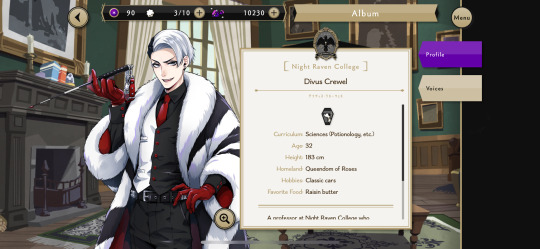

I don't know if I'd say that potionology is a true equivalent or a substitute for chemistry though...? It should be noted that chemistry exists in Twisted Wonderland as its own subject and is something that seems to be considered when potion brewing. It feels more like a component or basic knowledge you would need in order to make potions rather than potionology being "just chemistry, but magic".
Trey says in his Silk Adorned vignettes that, "They add certain metals to the fireworks mixture that burn in different colors. Barium makes yellow-green, lithium gets you red, and sodium produces yellow. Not many humans can use magic, so we turn to chemistry for stuff like this [...] I'm pretty sure you would've gone over flame tests in class... Anyway, the fireworks in the show will change colors based on the same principle as well." Note the elements from the periodic table and the mention of a lesson about flames in their science classes!l Chemistry must exist as its own subject for non-mages, and chemistry also exists as a basis of knowledge for mages to build upon for potionology, alchemy, etc.

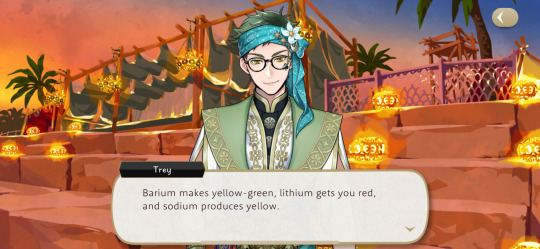

In NRC’s Science Club, they indulge in non-magical sciences, not just magical ones, despite the extracurricular being for an arcane academy. For example, Trey states he researches cakes and baking/cooking processes while Rook has been shown to create explosives and write wildlife research papers in extended Twst content.
If you need additional resources for potion-making in Twst and related topics:
Subjects at NRC
PPE and general lab safety
Do you need magic to make potions?
Types of potions + poisons and healing potions/magical medicine in particular
Ingredients (both magical and non-magical)
You can also check out my resources masterlist for other useful lore posts!
#twisted wonderland#twst#disney twisted wonderland#disney twst#notes from the writing raven#question#Divus Crewel#advice#Vil Schoenheit#Rook Hunt#Trey Clover#Trey silk adorned vigenette spoilers#Vil labwear vignette spoilers
81 notes
·
View notes
Text

101 wishes technique
Time ago, I think it was in 2017, I came across this manifestation method on youtube, I just looked for it now and I can’t find any media that talks about it for some reason so I’ll just have to rely on memory and personal modifications.
edit: omg I found it but it’s in italian > video > there are some differences in the method but anyway.
1. Take whatever journal you have, or buy one
When I knew about this method I used a small sized journal so that I could take it with me everywhere and hide it easily if you’re a closeted manifestor like me. You can first type in your notes app, but then you’ll have to write down the end thing on a journal.
2. Think about 101 things you want to manifest and write them down as a list, starting the phrase with “I want”
Example: n1- I want 1.000.000€ in my credit card, n2- I want a red pony, n3- I want to have super speed, etc…
A hundred-one things may seem a lot and they probably are, but you can think about literally anything, big or small, even just a random drive in mcdonalds from mom, or a castle in transylvania, and I came across some accounts on here that made posts of “what to manifest for fun” on various topics, such as supernatural, beauty wise, academic, and so on.
3. Read it all over every morning right after you wake up, or every night right before going to sleep
I used to read it at night before falling asleep so that I could detach better from it, but you do you
4. Just wait for da magic to happen
I remember that the man in the video said that, after a thing manifests, you can substitute it with a new wish.
“Rules”
you can do whatever you want of course, loa has no limits, these are just come of the rules i found in the video
- Start each wish with “I want” (not “I wish” or “I would like”, be firm)
- Avoid negative words (no, don’t, un, less, immune, etc)
- Maximum 14 words for each wish (it’s the max time you would have to whisper something in a breath)
- Avoid diminutives (“I want a little house at the beach” > you might find a little barbie house lmao)
- GO CRAZY with the wishes, write seemingly impossible desires, write down everything you ever wished for, they will become reality even faster
Before any little kid attacks me for putting rules over manifestation I’ll clear my throat one time and say “DO WHATEVER THE FUCK YOU WANT” and don’t limit yourself. Those “rules” are just the ones said in the video, and I use them basically for fun, because if you affirm anything against those “rules” you will still get your desired outcome because you’re a god and gods can do whatever the fuck they want without limit, so just sit and relax.
You can see results instantly, some people have received some of their manifestation on the same day, while others took more time, but it all comes down to your assumptions.
This is kind of a Law of Attraction thingy, because you just have to write down your desires, read them every day, and then detach. I hope you don’t hate me for speaking about something non-loassumption, I hope you still love me for who I am.
#manifestation method#manifestation#how to manifest#manifestation tips#manifestation advice#neville goddard#reality shifting#shifting#shifting realities#desired reality#loablr#shiftblr
190 notes
·
View notes
Text
Critical thinking tip: Beware of false equivalencies!
A false equivalence is a claim that two or more things that might appear superficially similar are actually the same, when in reality they aren't really comparable at all.
An example of this is when young Earth creationists (who proclaim that Earth is only 6000 years old and everything in Genesis happened literally) claim that they are simply just interpreting the same facts differently from other scientists, as if it's just like the famous rabbit-duck illusion where one is equally justified in seeing either a rabbit or a duck.
But the reality is that young Earth creationism simply doesn't work like this. Instead, their "science" is based on cherry picked data and ad hoc reasoning to try and dismiss the many facts real scientists discover that constantly show that young earth creationism just isn't very likely. Radiometric dating, tree ring data, and geological data consistently show that the Earth is quite a bit older than 6000 years. YEC responses to this often boil down to "well maybe physics just worked differently back then" (here's one example of this), and of course they never do any real tests or research to show that this is a real possibility. Moreover, they invent some absolutely bizarre claims to supposedly disprove evolution - like falsely claiming that the Second Law of Thermodynamics prohibits it.
All of this shows us that YECs aren't just scientists who interpret the data correctly - they are politically-motivated spin doctors using the aesthetic of science to make themselves look more credible. This is why when someone claims that their fringe idea is just as scientifically credible as a mainstream one, you have to ask yourself if that's really true. Are they following the scientific method and accepting results that don't align with what they wanted? Or are they engaging in special pleading and relying on fake evidence?
(By the way, I recommend Gutsick Gibbon's YouTube channel as a resource debunking YEC claims!)
Another form of false equivalence is when someone claims that mystical experiences and intuition are just as valid for determining what's going on in the world as genuine scientific research. But when we consider that something as wrong as World Ice Theory came from an apparently mystical dream, we have to consider that these kinds of experiences can be extremely misleading. We also know that professional psychics' yearly predictions have a high rate of failure. (Some examples. More examples. And some more examples. And even more examples!) We know that a tool such as the Ouija board can enhance memory recall, but when we're really honest about the accuracy of mystical information-gathering means, we have to admit that they're just no substitute for research and study.
So when someone asserts that two things are basically the same, or are fundamentally equivalent or fungible, ask yourself - are they really, though? And then do the research to find out!
#critical thinking#logic#logical fallacy#false equivalence#false equivalencies#creationism#young earth creationism#mysticism#psychic predictions
57 notes
·
View notes
Note
Hi, glad to see you posted this part, I really liked it. You did a great job, you wrote very interestingly and most importantly many things that satisfied my hunger for reading. But I have questions.1. How is it that humans have not ended yet? It's just that if this continues, everyone will die out.2. Will the parents of the students he killed kill Crowley for not keeping an eye on him. And will the headmaster be punished for this?Personal questions:How do you feel after publishing?At what moments were you strong for stupidity and why?Did you like the story that you were able to write?And I have an idea. If in this world there is a curse that is cast on the yandere: For example, a curse that does not allow the yandere to remember his beloved and he constantly searches for her, but cannot find her. And he cannot form a connection with another, because he is tormented by visions and a wall of a couple with whom he cannot meet. Thanks again for the head. Google translator.
I’m glad you like it! Now for the questions.
I don’t think it would. With the whole ‘you have one true love that will make you whole’ thing, it doesn’t mean that people just won’t try to seek companionship from others because they’re waiting for their darling. Even if someone doesn’t have a darling, the whole within them can be partially filled by having relationships with other people. Which can result in them having kids with other people, even when they don’t have their darling. Though it’s just slapping a bandage on a bullet wound, it’s still something that happens.
Not everyone will one day find their darlings, never finding them and death are a good reason for some darlings to never meet their yanderes. But when love is needed by the desperate, they’ll do anything to have it. And the products of the substitute love will eventually be conceived.
2. This is kind of inspired by @deceitful-darlings evil au.
Once again, I don’t think so. Sage Island allows for most darling capture/ rival disposal methods to be legalized to prevent underhanded tactics from turning the island into a warzone. Whether you attend NRC or RSA, you get the perks of lax laws should you meet your darling there.So essentially, by agreeing to attend you’re agreeing to risk your life, but usually there’s minimal issues. If you’re willing to kill someone on the isle to get what you want, you also better be willing to risk that yourself.
Sure, some people might want revenge, but yanderes work on a no-snitching policy. Without any witnesses, you have no idea whether or not they died in a tragic accident, or from murder. Besides, if there’s nobody, how can you tell whether they were killed or just vanished?
3. Ok, I’m gonna be honest, I actually wait to see whether you guys like it or not. 😅 For the last chapter, I was relieved that it was over after three or so months of a lot of writing, burn out and writer’s block. But in general, I am someone that craves validation and compliments for their work so about an hour after posting, I go ‘I hope they like it’.
It doesn’t matter if you don't, that's just how I feel especially considering how fast this kind of started.
Despite the fact that I do enjoy writing, even I have to stop and admit, ‘Yeah, that was a little cringe’. I’m not sure if you guys see it, but I think there’s a difference from when you’re reading a scene and writing it. Scenes that feel like they flow easily, actually require me to get up, stall for 30 mins, and then sit down to write it again, only to just skip to the next scene so I can avoid it. But hey, I get there in the end.
And I do like it, I really have a lot of ideas for it and I can’t wait to get to those ideas. It’s just that sometimes getting from point A to B is like climbing Mt.Everest.
Now for your idea, I have to say the thought of a curse made to make them forget their darling forever is absolute torture to a yandere. Making them forget their darling completely tears whatever feeling of wholeness and life that they got, and replaces it back with that desperate agony.
If they’ve been forced to completely forget them, then they’ll likely spend the rest of their lives trying to find their darlings again, but even if their darling is right in front of them they can’t feel the pull in their hearts. The yandere will likely go the way of serial yandere, attaching to whoever gives them the slight pull of their original darling desperate to feel that joy again.
That curse might be a freeing thing for darlings, because being completely forgotten from their yanderes minds is an utter blessing. With that curse, they can be freed if they desire to escape as their yandere can’t remember them being ‘the one’.
40 notes
·
View notes
Note
Hey! I dont know if you have already, but do you have a guide on what you NEED to know as a beginner?
🌷 Beginner Advice/Guide 🌷
As a beginner, You should be learning “The Golden Five” (as I like to call them) before anything else. They include: Grounding, Cleansing, Warding, Protection and Banishing. You can find information for these literally anywhere but I’m more than happy to cover them!
I will also cover some extra things too that are just handy to know/keep in mind!

Grounding
Grounding is something good to know in general, Not just for spirituality/paganism. The principle behind it is that you want to use techniques that calm/relax you (send you into your comfort/happy place) so you can focus on the here and now. I hope this makes sense. Meditation is a form of grounding!
Cleansing
Cleansing is the act of getting rid of any unwanted or negative energies etc. Different methods are used for this but the most common are smoke cleansing (using incense or even candle smoke for example), sound cleansing (using the sound of bells for example) and water (example: some people use moon water or create little bags of herbs they use in the shower/bath to cleanse themselves). There are plenty of other methods too but those are the ones I see used most often! Just use whatever works for you. A good incense to use if you like smoke cleansing but are prone to headaches (coming from someone who has chronic migraines) is frankincense and myrrh. A lot of people recommend dragons blood but for me it’s too strong.
Warding
The simple explanation for this one is that wards repel or trap any negative energies/entities/etc that attempt to attach to you or enter your space. People also use wards as defensive barriers against baneful workings. I have a guide on making a plant ward on my page that you could give a quick read but there are other methods too. I have enchanted witches bells that hang on my doorway for example. A common ward I see is salt along doorways, windowsills or any other point of entry into your space. Depending on the energy and intent you place into wards, Some may need to be renewed often and others may be okay for months.
Protection
This is the act of protecting yourself from unwanted/negative energies, backfired spell work, entities you may encounter etc. I have a more in depth guide on my page about why protection is important. Some common protection methods include: crystals and crystal jewellery, witches bottles, candles (use black ones for protection or you can substitute them with white candles as long as you set the intention of protection into them), drawing a pentagram on the roof of your mouth with your tongue and many more. Just use whatever works for you and your practice!
Banishing
Banishing is the act of getting rid of something, Not just repelling it. Most commonly it’s used to get rid of entities that try to attach themselves to you or enter your space but it can also be used to get rid of baneful workings, unwanted spell work results etc. This works for me (for entities) but may not for others: Opening a door or window and telling the entity to leave while shoving it out pretty much.
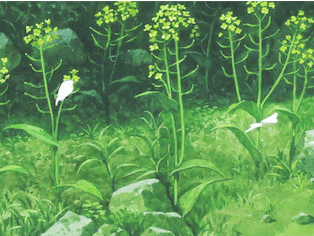
Extras
- Research closed practices. Learn why they are closed, who they are closed to, what practices are closed etc so you don’t unintentionally/accidentally appropriate a practice. Note: You shouldn’t be doing/using things from closed practices if you are not a part of them.
- Have a grimoire or book of shadows. A book of shadows/grimoire is basically a journal of all the knowledge you have learned throughout your practice. It’s a place you can find answers from or just give yourself a refresh on a topic. It’s like when you would write down everything you learnt in class.
- Meditation is the basis of everything. You need to be grounded and you need to be in tune with yourself for things like divination (as one example) to go smoothly. Try different methods of meditation, Find out what works for you. For example, I struggle to meditate unless the room is pitch black, there is no noise and I am laid down. Other people may benefit more from things like guided meditations which you can easily find on YouTube.
- Be careful of what information you take from social media. Always properly research a subject, cross reference resources and make sure the source is not problematic. Unfortunately, I have seen a lot of misinformation and potentially harmful activities being promoted on platforms such as tik tok.

🌷Recommended YouTubers 🌷
Below is a list of YouTubers that I would personally recommend for useful information:
- The Witch of Wonderlust (Great source of information for beginners. Has plenty of videos to do with cleansing, protection and banishing. One of my go tos for witchy content.)
- The Norse Witch (Has plenty of information for beginners as well as additional information about Norse Paganism if that’s an interest. Occasionally does unboxings for witchcraft subscription boxes if you are interested in those.)
- The witches cookery (Has a great playlist called “Witchcraft 101” which has some great “how to” and “witchy tips” videos. Also features a lot of information for kitchen and green witches.)
Side note: There are probably more content creators out there that are worth recommending but I rarely use YouTube anymore so I’m not too up to date on witchy channels on there.

Sorry this post took me so long to write, I’ve had a lot going on in my personal life today that I’ve had to prioritise. I hope this helps even a little! 💕
Tip-Jar and Readings
#beginner witch#witch blog#witch advice#pagan witch#witch stuff#witchy#witch#witchcraft#witchblr#witches of tumblr#witches#witch community#pagan#pagan community#paganism#paganblr#pagans of tumblr#pagan tips#pagan advice#pagan blog#pagan stuff#eclectic pagan#beginner pagan
111 notes
·
View notes
Note
what do you think of the comments on mdl of my stand in calling ming a cheater?
hi nonnie []~( ̄▽ ̄)~* that's actually something i've been thinking to write about because i saw those remarks as well but it is such a controversial thing to discuss. if you don't mind, this discussion post will be filled with mild spoilers of the novel.
!!!!!! novel spoilers warning !!!!!!
alright so first of all, @ineffable-opinions wrote an excellent post about the danmei tropes in my stand-in (which i highly recommend everyone to read). this is a great post as they discussed the white moonlight trope presented in my stand-in.

i don't consider ming, a cheater because as i see it, tong was simply ming's white moonlight. ming never established a physical nor emotional connection with tong, throughout his time knowing joe. tong was always an idealised fantasy, he's mistaken it for it to be love. in other words, i see it as ming looking up tong like a delulu fanboy with an idol crush than him actually having any substantive feelings for tong ever. i mean if you had a partner that looked like a kpop idol, and sex with your partner makes you feel like you're achieving your sexual fantasy, are you cheating on your partner? maybe? maybe not? probably controversial and debatable question but for me, i don't consider it 'cheating'. i do think ming took for granted joe's genuine feelings and did not fully appreciate joe's affection (ming you ungrateful bish, repent).
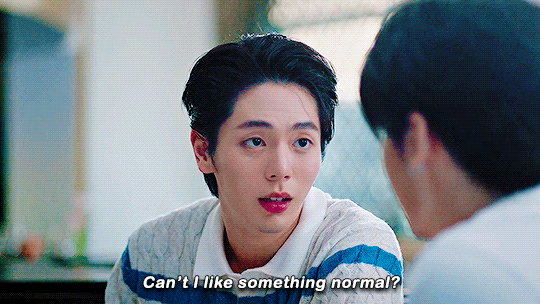
during their time together playing pseudo 'not boyfriends', ming showed that he could be an okay partner. whether it's caring about joe's day at work, how hard joe's job as a stuntman, accepting joe's invitation to accompany him to his wrapped filming party.

i mean it's really bare minimum but that's already quite a lot coming from the dude who's afraid as hell once joe started mentioning the 'faen' word, triggering his self-defense mechanism, depreciating himself trying to claim that joe wouldn't be able to stand him.

i think one of the most obvious example of how afraid ming was to lose this relationship, was him using the word 'faen' in the last breakup fight with joe. this line was very ironic of him to say, because i'm sure even ming knows this line applies more to himself (how in this life, ming won't be able to find a better boyfriend than joe).

i absolutely love ming's emotion progression in ep 4 because it encapsulates perfectly his 21 year old spoiled brat attitude. he was confused when broken up over the phone, then mad and started throwing tantrum trying to get joe to coax him (like joe always does), until he realized it wouldn't work this time and he started frantically begging for joe to stay so they could go back to playing house and being happy.
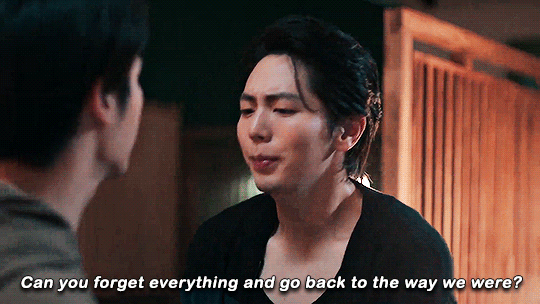
personally, i don't consider it cheating because by around ep3/4, you can already started seeing ming settling down with the option that makes him "happy". some may even argued that by this point, he has 'recognized' his feelings (not me though, i think he just wanted his simple happiness/domestic bliss back, i still think it's during the period he lost joe 1.0 that he learned what love truly is).
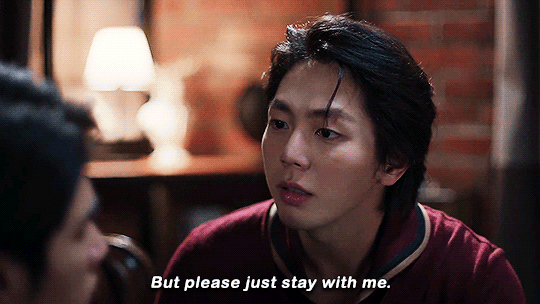
now the most important question of all: is ming cheating on joe 1.0 with joe 2.0 or vice versa?

to quote chapter 63 of Professional Body Double (My Stand-In novel), i think the author puts it best how ming views joe 2.0.
He has fallen to the point of looking for the shadow of that person in a substitute. This is his punishment. When he thought that he was using [Joe] as [Tong]’s substitute, he was not aware of the actual person who had entered his heart. He had failed miserably with this method but still could not help himself from wanting to try. There are no other reasons. Just that he was in too much pain. He can’t endure anymore. He was adamant that [Joe] is not dead but no one could confirm it. That little doubtful voice in his heart is getting louder and louder, but is roughly suppressed by him time and time again. To continually be persistent with this thought, he needed a lot of willpower. He knew better than anyone else. Even if this [Joe] could bring him a little comfort, he wanted to be close to him, just like a long frozen person wanting to be close to a matchstick. This can’t save him… but he couldn’t stop himself from taking that little warmth.
i LOVE this metaphor and this little inner thought of ming we got because we can see how he's very much aware that he's falling right back into the bad habit that got him into trouble in the first place but... he's a fucking fool... who resorts to spiritual shamans for hope...
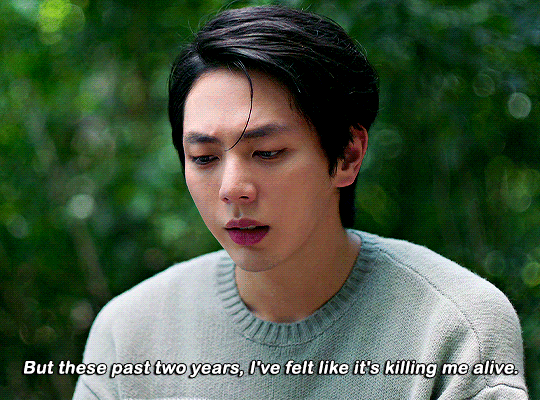
but also the familiarity he got from joe 2.0 is way too strong to joe 1.0. so for me, i'm seeing it as ming is using joe 2.0 as a means for comfort and relief as well as keeping him close to observe the similarities between him and joe 1.0, rather than viewing joe 2.0 as a replacement for joe 1.0 (because keep in mind, at this point he doesn't know they're the same person yet).
so !!!!!!!!! BIG WARNING of spoilers from the novel !!!!!!!!! if joe had considered joe 2.0 to be a direct replacement of joe 1.0, i don't think he would have had this conversation with joe 2.0 about joe 1.0.
Ming spoke right at this time. His voice sounded very faint and very soft, “Joe, are you hiding something from me?” Joe didn’t know what Ming meant by this. He asked cautiously, “I don’t understand what Khun Ming means.” Ming, “The feelings you give me is too familiar. It’s as if I’ve known you and have lived with you before. Why is this?” Joe forced himself to responded, “Maybe this is fate.” If it wasn’t because they are fated, they would not be in the predicament of today…with a relationship that is so unclear in both past and current lifetimes. “Joe. Tell me….If a person had been missing for more than two years, do you think he may still be alive?” Joe’s tensed up and smiled, “Most likely impossible. If still alive, he would have come back already.” “Why can’t he be alive? It could be that he didn’t come back because he doesn’t want to come back.” Joe is silent for a moment, “Khun Ming, are you talking about the other Joe?” Joe clearly felt Ming’s body stiffened. Then Ming asked, “How much do you know about him?” “I don’t know anything at all. I just heard from what others have said.” Ming quietly asked, “Then do you know what relationship I have with him?” Joe’s heart tightened, What relationship? You say, what relationship? He clenched his teeth in the dark, “I don’t know.” Ming’s voice is like the rising of the quiet abyss, cold and empty, “I feel that he’s not dead. He just doesn’t want to come back.” Joe heard his own voice dissociated from his thoughts and automatically asked, “Why won’t he want to come back?” Ming didn’t respond to his question, instead he tightened his arms around Joe.
i like that in the 2.0 timeline, we got ming learning but also not learning his dumbass mistakes at all. ming learned that he should be upfront about his feelings and be straightforward with his sexual partner, but at the same time he's still impatient, hot tempered and say hurtful things easily.

so i think through and through the second half of the series, you'll see his fidelity to joe (the soul) only. while perhaps it was the shadow of a back that mesmerized ming in the first place, but it's the kindhearted soul of joe that ming truly fell in love with, the person that showed him what love means, the only period in his life where he felt happiness.

© gif courtesy of the talented @alienwlw
you can also check out @befuddledcinnamonroll and @ineffable-opinions discussion on matters of transmigration, attachment of the soul with the body in their excellent posts, here and here. to sum it up, i think up kinda succintly puts it here in this interview.
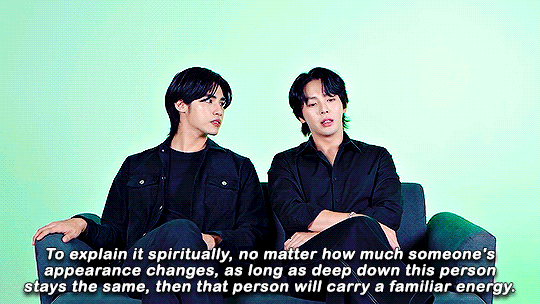
of course, this is not to excuse dating/fucking anyone who resembles your missing ex but then treating them like they're your object ;_; like i'm just saying i don't think what ming is doing with joe 2.0 can be categorized as cheating (for me). it's something scummy, foolish, dumb, really stupid but... not cheating ┗( T﹏T )┛.
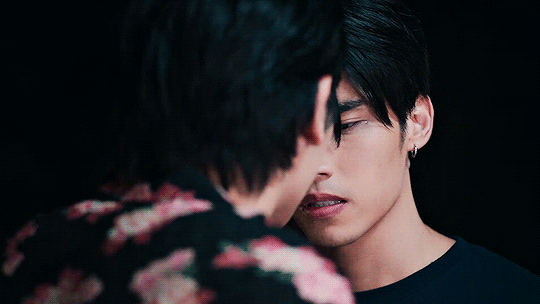
also if you notice, ming doesn't sleep around. surely he could have slept with dozen of nice looking man with similar physique to joe 1.0 to "keep the warmth" if he was that type of dude... but he doesn't... so for me, i see this proposal he has for joe 2.0 is not simply because of a physical attraction/similarity to joe, but it's the vibe/the aura/the ✨energy✨ that joe 2.0 radiates that is too similar to joe 1.0, drawing ming to him again.

tldr: ming is a lot of things but for me, i would never characterize him as a cheater. ming is a scummy, spoiled, arrogant, entitled, hot tempered hi-so brat but also a foolish little crying bag with zero wife-chasing skills. his only tactic is begging and getting his waterworks flowing.
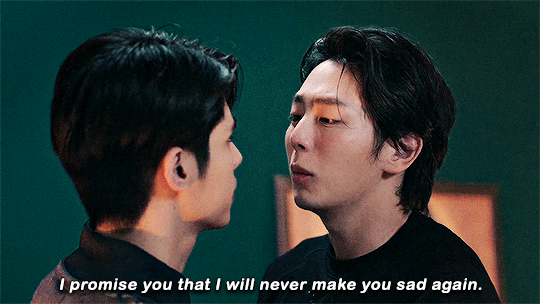
ps: i'm not sure if this ask actually answers your question at all but hopefully some of my thoughts made sense ಥ_ಥ
#msi thoughts#claire opens her goddamn mouth#my stand in#my stand in the series#mingjoe#my stand in novel spoilers#msi spoilers#usersasa#userrlana#userbunn
97 notes
·
View notes
Text
By: Elizabeth Weiss
Published; Jan 17, 2025
Biological anthropology and archaeology are facing a censorship crisis. Censorship can be defined simply as the suppression of speech, public communication, or information, often because it is deemed harmful or offensive. It can be enforced by government agencies or private institutions. Even self-censorship is increasingly prevalent, such as when an author decides not to publish something due to fear of backlash from their colleagues, or the belief that their findings may cause harm.
In these fields, censorship is primarily driven by professional associations like the American Anthropological Association (AAA) and the California Society for Archaeology, academic journals (often produced by these associations) such as Bioarchaeology International, universities, and museums, including the Smithsonian National Museum of Natural History. The focus of this censorship largely involves the suppression of images—including X-rays and CT-scans—of human remains and funerary objects, which are artifacts found in graves.
Biological anthropologists, such as bioarchaeologists (who study human remains from the archaeological record), have historically used photos and X-rays of skeletal remains and mummies to explore disease patterns of past peoples, teach new methods of age estimation and sex identification, and attract new students to the field of biological anthropology. Archaeologists use photos of artifacts to facilitate comparisons with other artifacts, aid in reconstructing past cultures, and explore topics like the peopling of the Americas, prehistoric trade patterns, and the emergence of new technologies. These are just a few of the many ways images have been used in the field.
Yet, in recent years, the use of photos of human remains and artifacts has faced increasing censorship. For example, the guidelines of the Society for American Archaeology (SAA) and its journals state: “Out of respect for diverse cultural traditions, photographs of full or explicit human remains are not accepted for publication in any SAA journal.”
Additionally, they add that “line drawings or other renderings of human remains may be an acceptable substitute for photographs.” In other words, they also may not be acceptable! So, the photo on the left would definitely not be accepted in SAA journals, and the image on the right may or may not be accepted.

In conference bookrooms, books featuring covers with photos or realistic images of bones are now being rejected for display. Ironically, just ten years ago, my cover photo from Paleopathology in Perspective: Bone Health and Disease through Time was so popular that someone stole the poster from the SAA conference bookroom. Just three years later, however, the SAA wouldn’t allow my publisher to buy advertising space using the cover of my book Reading the Bones: Activity, Biology, and Culture. Now, even realistic images of human remains are shunned! Somehow, I doubt my latest book, On the Warpath: My Battles with Indians, Pretendians, and Woke Warriors, will make it into any anthropology or archaeology conference bookrooms either!

Southeastern Archaeology, the journal of the Southeastern Archaeological Conference, has implemented a policy that it “will no longer publish photographs of funerary objects/belongings.” This is an expansion of their previous policy against publishing photographs of human remains. They now add that “in lieu of photographs, authors may choose to include line drawings or other representations of funerary objects/belongings.” This decision was initially made without member input, leading go backlash against the decision. However, after a discussion and a vote, the censorship was upheld. Majority rule is no way to run a scientific organization—which should be done on adherence to the principles and methodologies of science!
Not to be outdone by the southeastern archaeologists, the Society for California Archaeology (SCA) declared that “NO depictions of the remains of any specific person, regardless of ancestry, are to be included in any presentations, including photographs, drawings, X-rays, 3-D models, etc.” So, forget displaying any historic figures such as the mummy of Lenin, the death mask of Ishi, or the skeletal remains of Joseph Merrick (also known as the Elephant Man, who taught many people that physical deformity does not equate to a lack of intelligence). This restriction even extends to individuals like Jeremy Bentham, a professor from London College, who explicitly requested his preserved body be displayed, illustrating the breadth of these new policies. All of these and many others are now strictly off limits!

While banning photos, the SCA does permit the use of “[d]iagrams of generic skeletons, bones, teeth, or other body tissues.” Additionally, at their conferences, “[a] caution symbol will be placed next to all presentations discussing human remains in the program and on signage outside the door of the session so that those who wish to avoid this subject matter can easily do so.” Is education truly about avoiding uncomfortable information and materials?
The AAA’s Commission on the Ethical Treatment of Human Remains has ruled that images and digital materials must be treated as parts of bodies—and, thus, not published in any public spaces, including on social media. They state:
The use of images and any other digital materials (e.g. maps or GIS) derived from human tissues or Ancestral remains should be considered as part of the respectful treatment of those whose actual remains are used. This treatment acknowledges that their use should be restricted to defined (and consented) purposes, and that such use should remain confined to a protected, nonpublic space (and should never be displayed on social media or other non-password protected internet sites, including educational sites, and museums).
In other words, even maps constructed with DNA information are now subject to restriction!
They also plan to require members to take an “ethics pledge” to join or renew their membership. This is to ensure that no one goes rogue and shows a human bone in a place where someone might actually see it.
Journals that once served as valuable resources for understanding bone pathology (or disease) are now discarding the most important tool of all—images. Bioarchaeology International now demands “explicit recent permission” from descendants for the use of photos or images of human remains, even if the image were taken before these requirements and had been previously published (often on multiple occasions). These are referred to as “legacy images.” The journal further states that “if no permissions are forthcoming, the manuscripts are not considered for review.” Bioarchaeology International is not alone in censoring the use of legacy images; nearly all peer-reviewed anthropology and archaeology journals now enforce a similar policy.
One exception is the American Association of Biological Anthropology, which publishes the prestigious American Journal of Biological Anthropology. This organization specifies that the requirement to obtain permission for images and data of human remains applies only to new data; “legacy data is not included.” One wonders how long these comparatively ‘courageous’ holdouts will last before caving in. Currently, they have a committee developing a policy on human remains.
The International Journal of Paleopathology specializes in case studies of rare pathologies, where photos are essential to conveying information. The editorial board acknowledges the usefulness of photos, but they also state that:
While careful description of pathological lesions is essential to research in paleopathology, authors are encouraged to consider whether photographs of human remains are critical to the presentation of the research. If not essential, out of respect for descendent communities, they should be replaced with drawings or included as supplementary material. Authors may wish to consult the editor regarding these issues.
Can a line drawing really do justice to the complex and intricate changes that occur on skeletons due to diseases like osteomyelitis (bone infections), osteoarthritis, cribra orbitalia (a sign of anemia), or the various forms of dental disease seen sometimes in a single individual?

Beyond this censorship, institutions are also toeing the ideological line to exclude images of human remains. In September 2023, Penn Museum decided that its inventory would not include such images. And, the renowned Mütter Museum of the College of Physicians of Philadelphia, which aims to educate the public about anatomical medicine and health, has removed all images of human remains from its online database. This includes the image of Carol Orzel, who had specifically wished that her body be displayed to educate others about fibrodysplasia ossificans progressive, the painful, debilitating, and fatal bone and cartilage disease she suffered from.
The Santa Barbara Museum of Natural History issues a warning to anyone who might find human remains: “Never take photos of human remains in our region; that is culturally inappropriate here.” But Santa Barbara is a region that encompasses many cultures, including some Central Mexican communities who do not view photographing human remains as inappropriate, as they celebrate their ancestral past by displaying the dead. For example, Lisa Holtzover and Juan R. Argueta note in their 2017 article that in the central Mexican town of Xaltocan, indigenous residents support archaeological research and the exhibition of ancient human remains. Yet, North American academics often criticize their cultural preferences, even while they claim to be decolonizing the field. In their blind adherence to wokeism, academics’ patronizing “we know best” approach towards indigenous peoples who deviate from their narrative exemplifies a white savior complex. Ironically, those who claim to oppose racism in their quest for wokeism are themselves perpetuating it. What next? Should we give Egyptian mummies a Christian burial in the name of decolonization?
Universities, especially in California, have also imposed complete moratoria on the use of human remains images. For example, on August 30, 2023, California State University Bakersfield’s president issued a moratorium that stated:
[T]he university is placing a moratorium on the research, teaching, display, imaging, and circulation of human remains and cultural items (including archival material, notes, movies, and data) that are potentially subject to NAGPRA and CalNAGPRA.
Similarly, on March 26, 2024, the president of California Polytechnic Pomona issued a memorandum stating:
Cal Poly Pomona will consult with Tribes prior to access, use, distribution or display of potentially sensitive or proprietary information. This includes but is not limited to images, renderings, and reproductions of ancestral remains and cultural items that are or have been in a university’s collection.
The universities are dressing up their actions as compliance with national and state reburial laws, yet these laws do not yet ban the use of images. And, from the look of anthropologists’ self-censoriousness and the acts of university presidents, new laws are likely not even necessary to restrict scientific research and educational efforts.
But this isn’t just a US problem. For instance, Uppsala University in Sweden advises that “photographs of human remains from indigenous ethnic groups are not normally to be published.” Similarly, the National Museum of Scotland has put out a statement that “All images of human remains except those that are wrapped have been removed from our online collections database.” At the Smithsonian National Museum of Natural History, this policy resulted in the absurd covering up of a mummy that was wrapped because of the photo behind the mummy contained images of skulls from a forensic collection.

One may wonder what has led to such vast censorship. Progressive anthropologists have decided that images—and, in some cases, data—from human remains and funerary objects cause harm to indigenous peoples. They adopt the narrative from indigenous activists that these images are dangerous, rather than explaining the importance of research and dispelling the notion that societal ills like alcoholism, missing women and children, and poverty stem from evil spirits roaming the earth and wreaking havoc on their lives.
For instance, in a 2020 book chapter on digitizing anthropological collections, Laure Spake and colleagues, citing the Smithsonian’s collaboration with the Tlingit, stated, “the disturbance of Ancestors and their belongings can result in physical danger for the living.” Ironically, the authors used this argument to advocate for 3D scanning and creating replicas to allow for the rapid reburial of human remains as quickly as possible—a viewpoint that is now considered outdated!
At a Native American Graves Protection and Repatriation Act meeting on January 5, 2023, there was a discussion on the deletion of digital data. Even non-fungible tokens (NFTs) were discussed, although those discussing them didn’t even know what they were. During the meeting, Hawaiian Native activists argued that it’s possible to “entice the spirit of someone to inhabit” photos, digital data, and replicas, which they assert can be harmful. Consequently, the tribe opposes making scans and casts.
Larry Zimmerman and Margaret Conkey, in their 2024 article for the SAA Record, argue that control over photos and data should belong to Indigenous communities because it is “respectful” to believe their feelings of harm. In their words, “when someone tells you that what you are saying or doing hurts them and you truly respect them, you will make every effort you can to eliminate or at least to understand the cause of the hurt.”
Furthermore, in the 2024 AAA Ethical Commission on Human Remains, Sabrina Agarwal and her colleagues repeatedly imply that harm will come to descendent communities from research. The term “harm” actually was mentioned 44 times, including in the statement:
As an ethical approach to ethical solutions, the Commission chose to meet with representatives of those most affected by anthropological work with ancestral remains to learn their assessments of how they might be harmed or protected from harm when research and education is considered.
In a 2020 article in Sapiens, Chip Colwell wrote that “photographs of human are problematic because of specific cultural beliefs.” He elaborates that the Navajo, for instance, believe encountering spirits of the dead can sicken those who see them. He helpfully then adds that photos are more harmful than line drawings, 3D scans, or casts.
Also in 2020, Deborah Thomas, then the editor-in-chief of American Anthropologist, selected a photo of Margaret Mead with skulls for an issue featuring a special section on the anthropology of global white supremacy, complete with a republished conversation between Mead and James Baldwin. The image sparked a social media uproar and was said to be violent, racist, and harmful to indigenous and black communities. Thomas, agreeing that the image produced trauma, changed the cover and issued a groveling apology, which included the statement that “We know the role that anthropology has played in the erasure of Indigenous peoples in the Americas through its salvage/savage ethnography project and its continued use of human remains for ‘research’ purposes.”
Unfortunately, by leaving anthropology and archaeology devoid of images of human remains and funerary objects, we will learn less about the past. Legacy data will not be allowed for comparative research, and our next generation of forensic anthropologists will be poorly trained. More troubling is that non-scientists who attribute normal human variation to supernatural or alien influences will continue to captivate young minds with sensational images, drawing them towards pseudoscience instead of a genuine scientific understanding of the world.
Moreover, we should not expect censorship in anthropology and archaeology will be limited to new publications featuring human remains. I have no doubt that woke academics and publishers will start to remove previously-published materials. For example, the University of Florida Press deleted the images from my blog post, “Human Variation: More Than Skin Deep!”—which was intended to promote my book Reading the Bones—two years after its initial publication on their blog.
What is the solution for anthropologists? Woke anthropologists suggest a different mindset is needed. Zimmerman and Conkey argue that archaeologists will be required to abandon “cherished ideas like academic freedom” and “relinquishing complete control, ownership, or even stewardship of excavated materials” to continue working in the field. Additionally, the AAA Commission on the Ethical Treatment of Human Remains would also like to curtail our desire for academic freedom. They write, in a scolding tone, that “Academic freedom is not synonymous with ‘unrestricted access.’ Scholars, educators and museum curators must be responsible to descendants’ concerns for the dignified treatment of their dead.”
Once academic freedom is relinquished and the data—images and all—are in the hands of activist descendant communities, don’t expect new scientific discoveries. Instead, expect woke fairy tales arising out of victim narratives.
Censorship (and self-censorship) of images should not be seen as an isolated issue. It’s symptomatic of a wider pathology afflicting the field. Anthropology is dying. But when it’s finally dead, don’t expect to see a picture of the body!
--
About the Author
Professor Emeritus of Anthropology at San Jose State University and National Association of Scholars Board Member. Author of On the Warpath: My Battles with Indians, Pretendians, and Woke Warriors.
==
This is unabashed corruption.
Any organization or institution which implements policies like this must be stripped of all government (i.e. taxpayer) funding. You don't get to implement ideological dogma when the taxpayer is paying for it.
#Elizabeth Weiss#anthropology#archaeology#academic corruption#ideological corruption#woke dogma#wokeness#cult of woke#wokeism#wokeness as religion#woke#academic freedom#corruption#religion is a mental illness
31 notes
·
View notes
Text
A Selection of Weather Magick

Whistling Up a Wind
Whistling up a wind is one of the most common forms of weather magick and has been practiced for hundreds of years. Depending on the pitch and tone of whistle, a witch can create a gentle breeze or a sharp gust of wind. You can physically whistle with your lips, use a wind whistle or even a glass bottle. The tone, pitch, and length of the whistle you make determines the type of wind you will get. For example, a low pitched whistle will form a light breeze and a short, sharp, piercing whistle will form a huge gust of wind
A Storm is Likely to Come When
• Deciduous trees flip their leaves due to wind direction
• Birds fly low in the sky and go quiet
• There's a Southerly wind
• There's red dawn in the East
• Layers of nimbus clouds move in opposite directions
• The morning grass is dry of dew
• An earthy scent rises from the soil and flowers
• Pine cones remain closed
• A halo rings the moon at night
• Nights are warm in Winter (cloud cover insulation)
• Smoke swirls and descends instead of rising steadily.
Storm Casting
Storm casting is the art of creating storms through magick. There are many different methods for casting storms ans bringing rain. One method is to fill a jug with water and while sitting outside (or facing an open window) pour the water into a basin or bowl. Dip the tip of your finger in the water (you can also use a pendulum/necklace) and make five slow, clockwise circles in the water. As you are making the circles call the wind to bring in a storm by blowing or whistling a continuous low note, like wind over the mouth of a glass bottle, over the basin.

Untie the Wind
Sailors used to buy knotted cords from witches. When the knots were untied the wind would pick up. The more knots untied the more wind there would be. This can still be applied today using one's breath or the wind itself. On a windy day take yourself to a high place where the wind blows strongly. Take a red cord with you, to be knotted in three places. Focus on the wind and when you feel connected to it, begin tying it into knots. Left side first, then right, and the last knot center. Accompany your actions with a charm such as,
"Each knot I make, and then untie,
Will stir the wind, to fill the sky".
Keep the cord in a high place and when you want to summon a wind, simply untie the knots in reverse order. Chant:
"This knot is untied, so the cord is free,
As the cord is freed, the winds shall be".
For a strong gale untie all three knots.
Stopping a Storm
Dispersing: This method involves spreading the storm out over a large area, there by minimizing its effects. You can disperse a storm by calling winds to blow it away (or in a certain direction).
Binding: This method is called 'storm catching' and involves catching a storm and binding it with an object (usually a bottle) so it can be released gradually at a later date.
Storm Water
One of the easiest forms of weather magick is to collect storm water (also called thunder water). Set a bowl or vessel outside during a thunderstorm. You're not just collecting water, you're also collecting the potent energy in the atmosphere. The thunder, lightning, and pressure all charge the water with extra energy. When the storm is over bottle and keep for spellwork, anointing, and more.
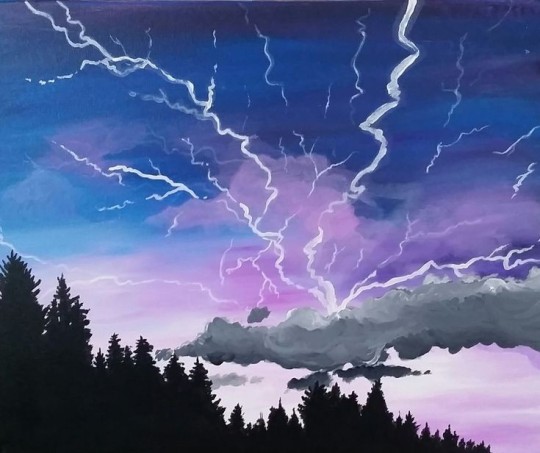
Ancient Latin Wind Invocation
Stand outside and say the following:
"Venire ventus venire, sinere solus sentire relaxari, venire nunc nunc venire venire venire venire"
Ancient Latin Rain Spell
Look up to the sky and say:
"Elementum recolligo huie commodo locus mini vestri vox Elementum ego unda dico vos Permissum pluit es est meus nos sic vadum is existo"
Meteorological Symbols

• Can be used as sigils
• Use for weather summoning
• Can substitute a certain weather condition required as a spell component
Herbs, Trees, and Plants used in Weather Magick
Alder: Raises winds, commonly turned into wind whistles
Broom: Thrown into fire to calm winds, thrown in the air to raise winds
Cotton: Thrown into fire to bring rain
Ferns: Thrown into fire to bring rain
Garlic: Warn to ward off bad weather
Heather: Thrown into fire to bring rain
Henbane: Thrown into water to bring rain
Oak/Acorn: Protects against lightning strikes and bad weather
Pansy: Brings rain and storms, if picked on a sunny day brings storms but if picked early in the morning while covered with dew brings rain
Rice/Grain/Wheat: Thrown into the air to bring rain
Saffron: Raises winds, assists with control of the weather
Thistle: Thrown into fire to redirect lighting

"There are some things you can only learn in a storm."
#satanic witch#satanism#withcraft#demons#magick#witch#demonolatry#lefthandpath#dark#witchcraft#weather magic#weather#storm magic#storms#eclectic witch
67 notes
·
View notes
Note
I worked as a substitute teacher for a few years and one day I helped sub in an 8th grade science class. They were doing math like speed=distance/time. But they had a...really odd method for it. That I commented on because I'd never heard of it before.
And the teacher was straight up like "Oh yeah, this makes it really easy for them to do it for the tests. But its going to really fuck them up next year when they are in high school because they won't understand how to reverse the division. But that's not my problem."
And that comment has lived in my head so much. Like, she just did NOT care that the method was bad in the long run. She just needed them to pass the state test that year.
Also, it's literally a very basic formula, what do you MEAN?
Ohhhhh yeah. That's not exactly the issue in my district, as funding for us isn't directly tied to our state exam scores (thank god). Mine is dealing with both grade inflation and no grades below high school. So kids don't want to learn things if they're not graded on the material. Which is fair, honestly, as I also would not have wanted to learn things I didn't like if I wasn't given a grade or any consequences for not knowing it either. Mine's also dealing with a lot of the "memorization bad" thing that's going around, hence why the kids are entering high school not knowing any of their times tables. They just used a calculator their entire lives. They have NO concept of what numbers mean.
Like, at the start of the year, I asked one of my classes what 2 + 0 was and I got about thirty seconds of 15 kids shouting every number except 2. Which was sort of wild to witness.
At the start of the year, we did a week of review and then we had all the freshmen take a quiz of 7th and 8th grade level easy math problems as a sort of wake up call for them. No quiz corrections either, which they've never not been allowed to retake a test before...
The class average was a C-. Unsurprisingly.
Content Teacher warned me right before she posted the grades, and I spent a LOT of time that afternoon talking the kids down from a metaphorical ledge.
Lots of angry parent phone calls, too, but the math department held firm. The students HAVE to know how to solve this stuff. They NEED to know their basic times tables, they NEED to know how basic fractions work, they NEED to know how to rearrange one-step equations.
After that, we had our Very Frank Class Discussion about how they felt about their education. They felt very frustrated and unprepared, which we validated as we're also frustrated that they're so unprepared. But we were honest about other things. We told them that they couldn't get by just sitting there on their phone and copying the answers off the key anymore. We aren't going to reward an A for minimal effort. Yes, you have to take notes, and yes, you have to follow along with classroom example of problems or you won't pass the class. The students are responsible for their education, we all offer extra help, all our emails are open, all they need to do is ask and we'll never turn them away. But they do need to start taking advantage of all the learning opportunities/supports they have now.
Honestly, I'm so glad we had that convo with them. Felt like they got to vent a lot of their frustrations, and they realized that we were here to push them, but we're NOT their enemy. All our students have a study hall block, and if they come to one of our rooms for even 10 minutes out of the entire hour, we will help them however they need.
A lot of my Freshmen have been really really good about coming for extra help, or emailing and asking if they can stop by for a few minutes to do a few homework problems 1-1 with me.
(And yes, for those worried, while we didn't let them retake that first quiz, two weeks later we did give them another assessment after on the same material, but with slightly harder problems and worth more points. Class average was a B!)
I tried to keep this short, but I guess I had a lot to say aksjnfksjdnkajn
37 notes
·
View notes
Text
2023 Botober drawing prompts
Here they are!
I continued my tradition of using the year's state-of-the-art models to generate the prompts which means my methods were:
Ask GPT-4 to make its drawing prompts really weird, in the style of AI Weirdness Botober. Then sift through all the cutesy alliteration for the reasonably interesting stuff.
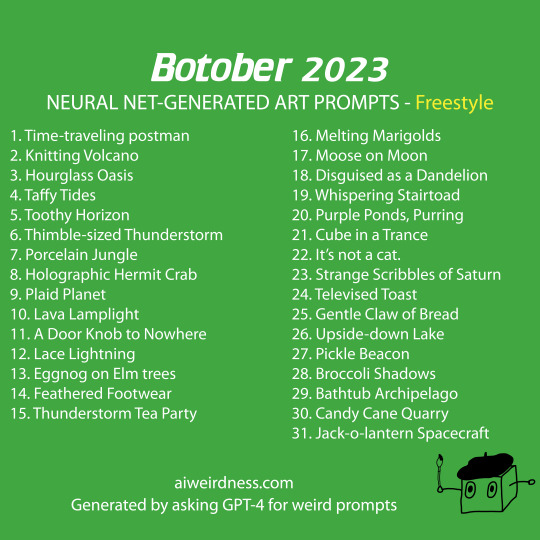
Ask GPT-4 to list Botober prompts from previous years. Instead of actually recalling them, it just claimed to do so and then produced other stuff.
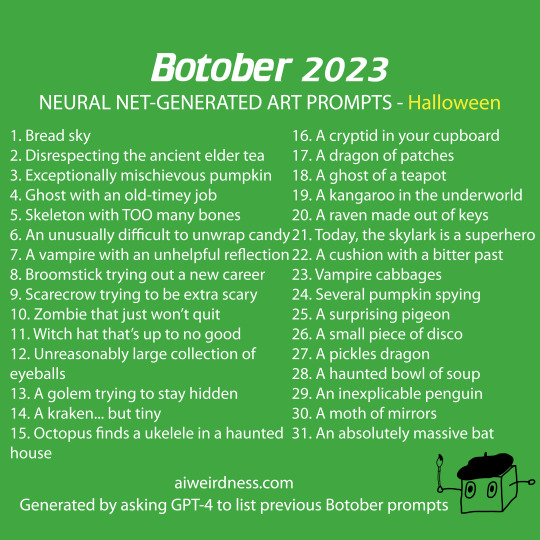
Ask GPT-4 to list Botober prompts from previous years, then turn up the temperature (chaos) on the model until it allllllmost breaks.

Here are examples of some of the longer responses I got with GPT-4 and chaos setting 1.2. They wouldn't fit in the grid, but please feel free to substitute any of these for any of the prompts above.
Immortal Turnips disrespecting celery. OWL PHANTOM AND CABBAGE-O-LANTERN (LIGHT) Final parsnips in particular Before memory, an ancient tool waits to be discovered The Candle That Leapt over the Lake at dusk does a pirouette dussewe wind at earth bubb submission velvet little hurricane breakfast blown in be putty and goodness vodka… gaselocity scoct slices vold cave with When humans item. And those humans aren’t ordinary. See through your balloon eyes The matibrush comes tomorrow in shorts Retired Pirate Chooses Invisible Beard Open the Happy Bones The Cursed Flavor Fiend Slurps your Essence. Glance of the lavender popcorn mussel Eureka! Solar system pancakes Pause to contemplate radishes Apple mystery solution—the crypt underneath The totally real crown of all Barnacles
I also tried Bard and Bing, but their responses were repetitive and generic and I didn't have a chaos slider to play with.
(more at aiweirdness.com)
If you draw any of these, tag them with #botober or #botober2023 so I can find them!
#neural networks#botober#botober 2023#october drawing challenge#gpt-4#if it was actually retrieving past botober prompts as it claimed none of this would have worked
402 notes
·
View notes